Photobook: Work Week Workshop
A conversation about photobook publishing with Beate Cegielska, Galleri Image and paula roush, msdm studio.
By Ane Bonde Rolsted
KATALOG Journal of Photography & Video 32.1 [get it here]
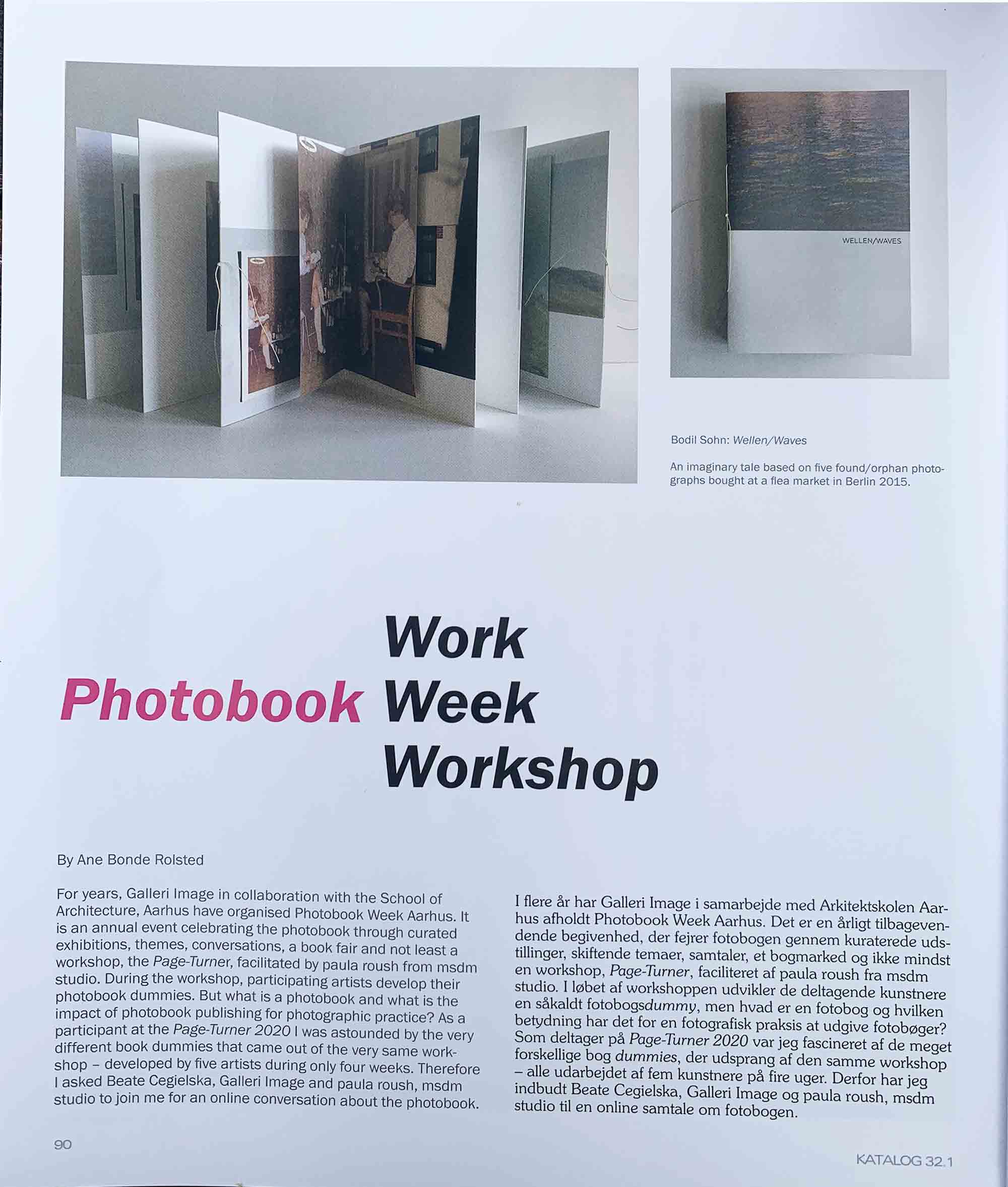
For years, Galleri Image, the oldest non-commercial gallery for camera-based art in Denmark, has organised Photobook Week Aarhus in collaboration with the School of Architecture, Aarhus. It is an annual event celebrating the photobook through curated exhibitions, themes, conversations, a book fair and not least a workshop, the Page-Turner, facilitated by paula roush from msdm studio. During the workshop, participating artists develop their photobook dummies. But what is a photobook and what is the impact of photobook publishing for photographic practice?
As a participant at the Page-Turner 2020 I was astounded by the very different book dummies that came out of the very same workshop – developed by five artists during only four weeks. Therefore I asked Beate Cegielska and paula roush to join me for an online conversation about the photobook.
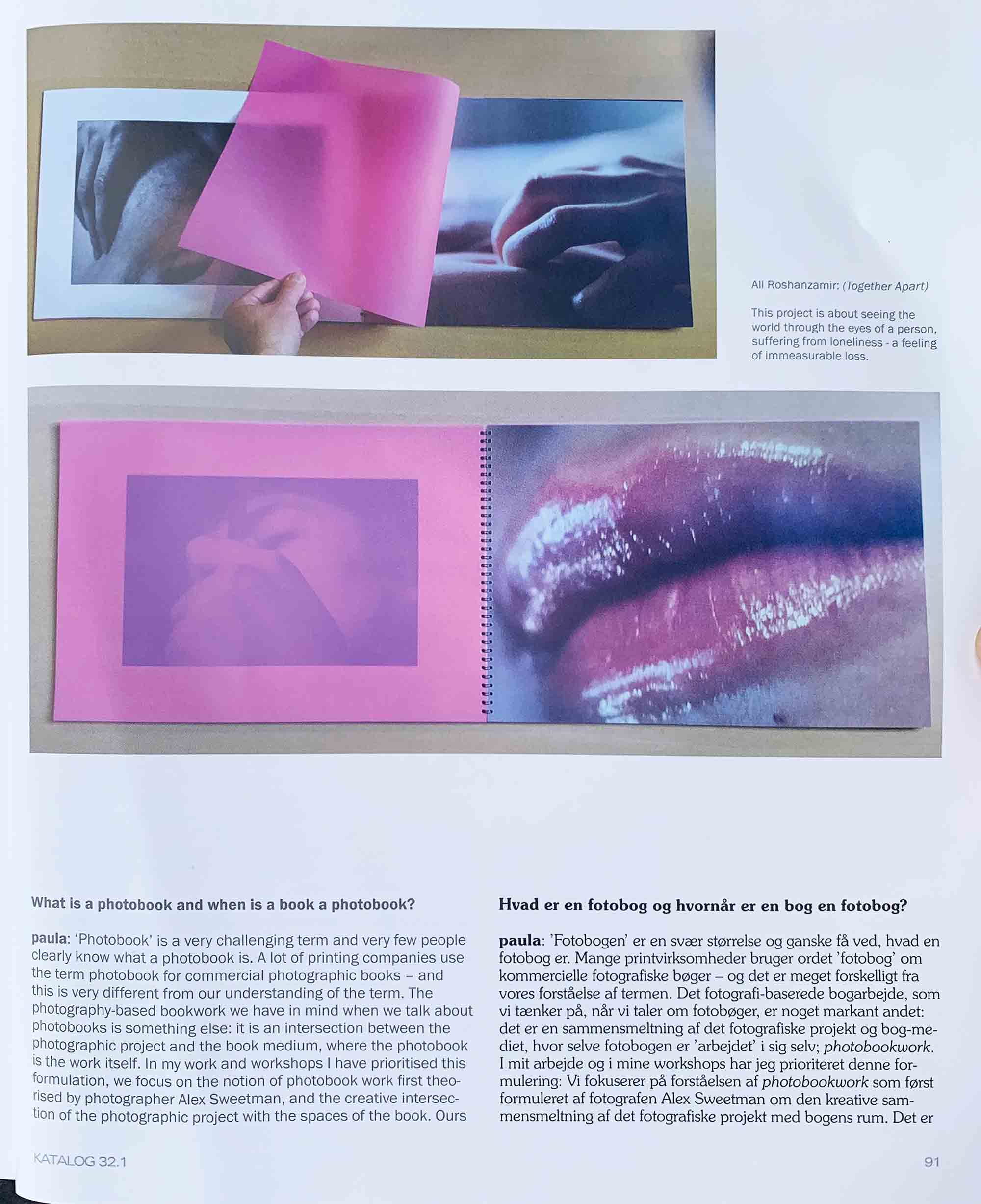
Ane : What is a photobook and when is a book a photobook?
paula: ‘Photobook’ is a very challenging term and very few people clearly know what a photobook is. A lot of printing companies use the term photobook for commercial photographic books – and this is very different from our understanding of the term. The photography-based bookwork we have in mind when we talk about photobooks is something else: it is an intersection between the photographic project and the book medium, where the photobook is the work itself.
In my work and workshops I have prioritised this formulation, we focus on the notion of photobook work first theorised by photographer Alex Sweetman, and the creative intersection of the photographic project with the spaces of the book. Ours is an indie approach to self-publishing, combining digital design with in-house printing and hand-made binding, in order to produce short-run editions that are both collectible and affordable.
Beate: For years it has been important for the photographers to create a book and a well-done book can be a small piece of art in itself. Before we started the festival Photo Book Week Aarhus an artist in my network introduced us to his collection of photobooks. And I must say, that having the photographs in our hands gives so much pleasure… and we can bring the book home. As a child I was very visual and I loved books. The author Arkady Fiedler travelled and made photobooks from his travels. I had all of them and they made me dream of travelling and getting to know the world.
paula: I agree, I always collected photography in book form. Photobooks make photography portable and allow it to become part of our home. Photography is not just for the gallery wall!
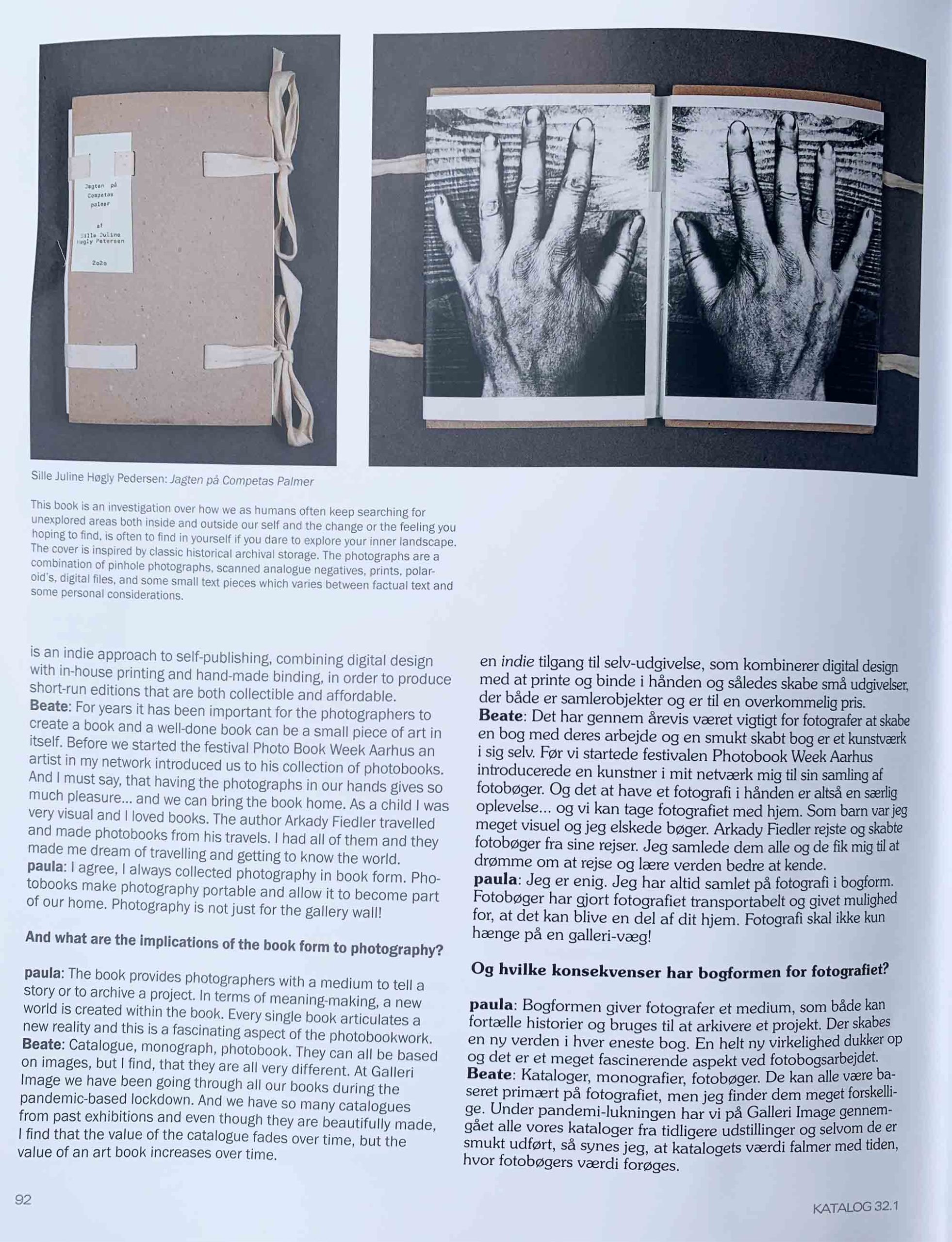
Ane: And what are the implications of the book form to photography?
paula: The book provides photographers with a medium to tell a story or to archive a project. In terms of meaning-making, a new world is created within the book. Every single book articulates a new reality and this is a fascinating aspect of the photobookwork.
Beate: Catalogue, monograph, photobook. They can all be based on images, but I find, that they are all very different. At Galleri Image we have been going through all our books during the pandemic-based lockdown. And we have so many catalogues from past exhibitions and even though they are beautifully made, I find that the value of the catalogue fades over time, but the value of an art book increases over time.
paula: Whereas the catalogue is often about something external to the book, the bookwork is photographic art in and of itself created as part of the book. But please remember, that Beate and I are now talking in general terms. In the history of publications there are plenty of examples of catalogues that have been successful art objects.
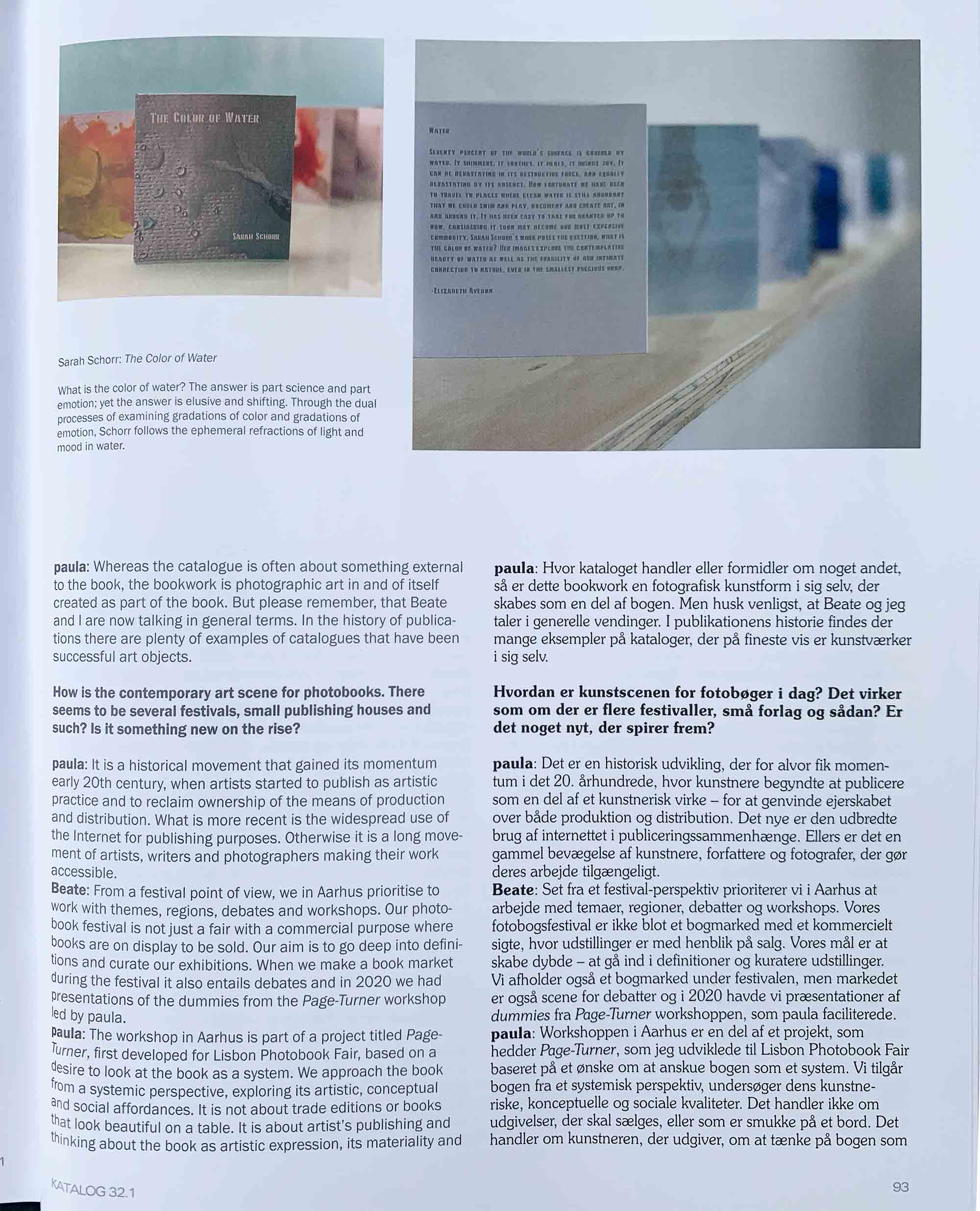
Ane: How is the contemporary art scene for photobooks. There seems to be several festivals, small publishing houses and such? Is it something new on the rise?
paula: It is a historical movement that gained its momentum early 20th century, when artists started to publish as artistic practice and to reclaim ownership of the means of production and distribution. What is more recent is the widespread use of the Internet for publishing purposes. Otherwise it is a long movement of artists, writers and photographers making their work accessible.
Beate: From a festival point of view, we in Aarhus prioritise to work with themes, regions, debates and workshops. Our photobook festival is not just a fair with a commercial purpose where books are on display to be sold. Our aim is to go deep into definitions and curate our exhibitions. When we make a book market during the festival it also entails debates and in 2020 we had presentations of the dummies from the Page-Turner workshop led by paula.
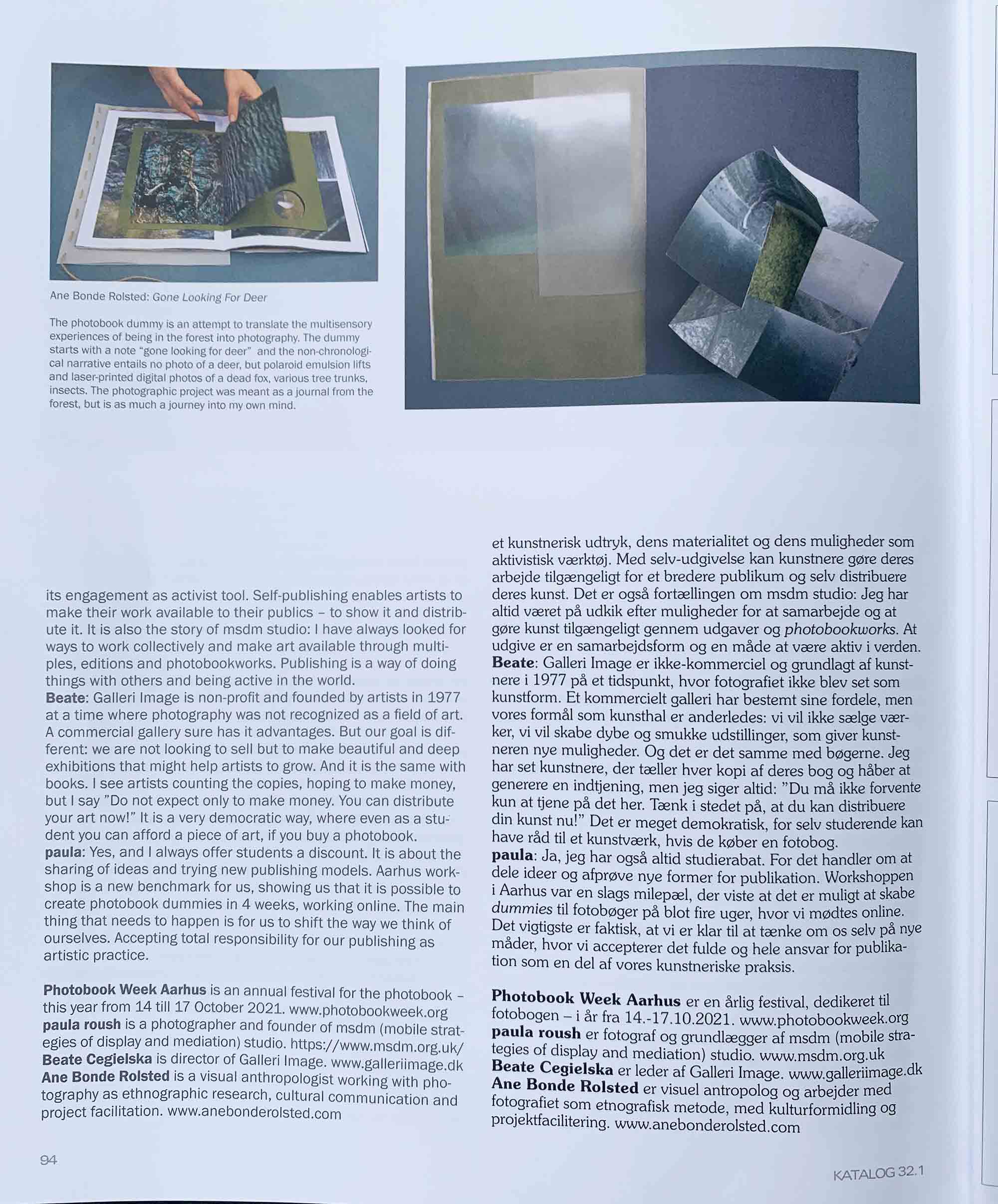
paula: The workshop in Aarhus is part of a project titled Page-Turner, first developed for Lisbon Photobook Fair, based on a desire to look at the book as a system. We approach the book from a systemic perspective, exploring its artistic, conceptual and social affordances. It is not about trade editions or books that look beautiful on a table. It is about artist’s publishing and thinking about the book as artistic expression, its materiality and its engagement as activist tool. Self-publishing enables artists to make their work available to their publics – to show it and distribute it. It is also the story of msdm studio: I have always looked for ways to work collectively and make art available through multiples, editions and photobookworks. Publishing is a way of doing things with others and being active in the world.
Beate: Galleri Image is non-profit and founded by artists in 1977 at a time where photography was not recognized as a field of art. A commercial gallery sure has it advantages. But our goal is different: we are not looking to sell but to make beautiful and deep exhibitions that might help artists to grow. And it is the same with books. I see artists counting the copies, hoping to make money, but I say ”Do not expect only to make money. You can distribute your art now!” It is a very democratic way, where even as a student you can afford a piece of art, if you buy a photobook.
paula: Yes, and I always offer students a discount. It is about the sharing of ideas and trying new publishing models. Aarhus workshop is a new benchmark for us, showing us that it is possible to create photobook dummies in 4 weeks, working online. The main thing that needs to happen is for us to shift the way we think of ourselves. Accepting total responsibility for our publishing as artistic practice.
paula roush is a photographer and founder of msdm (mobile strategies of display and mediation) studio. msdm.org.uk
Beate Cegielska is artistic director at Galleri Image a public gallery in the center of Aarhus, Denmark. The Gallery focuses on photography and camera-based art. galleriimage.dk/
Ane Bonde Rolsted is a visual anthropologist working with photography as ethnographic research, cultural communication and project facilitation. anebonderolsted.com
Photobook Week Aarhus is an annual festival for the photobook. The festival is initiated by Galleri Image and organised by Galleri Image in Collaboration with the School of Architecture in Aarhus, In 2021 the festival takes place Sept 30. - Oct. 3rd. photobookweek.org
contact
paula roush ::: paularoush@gmail.com
msdm studio ::: msdm@msdm.org.uk